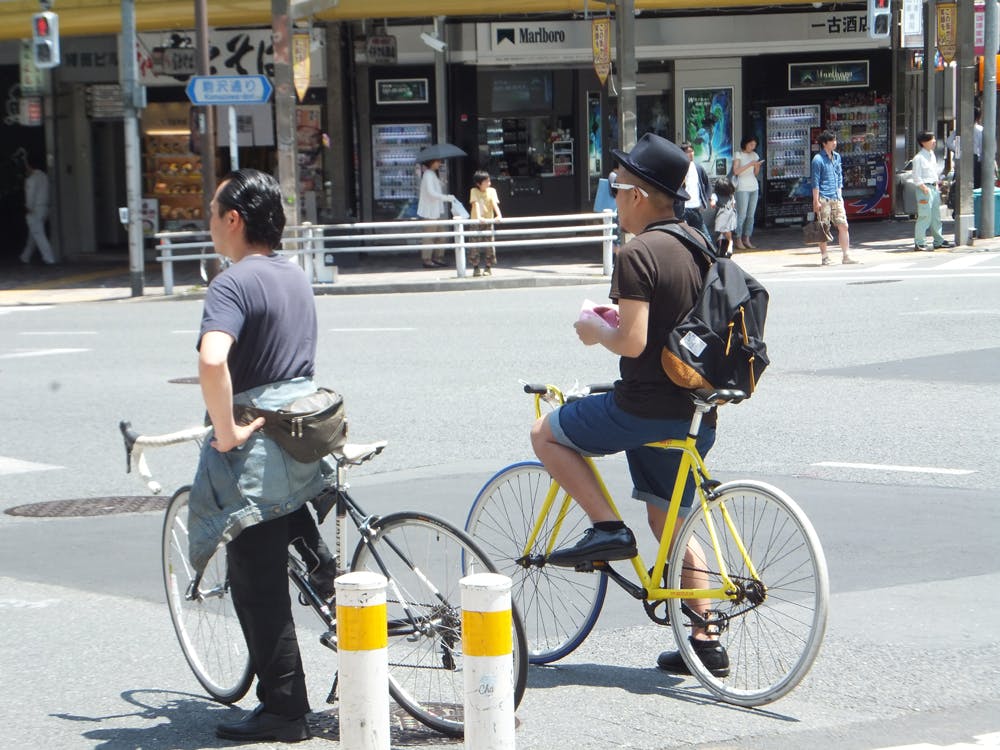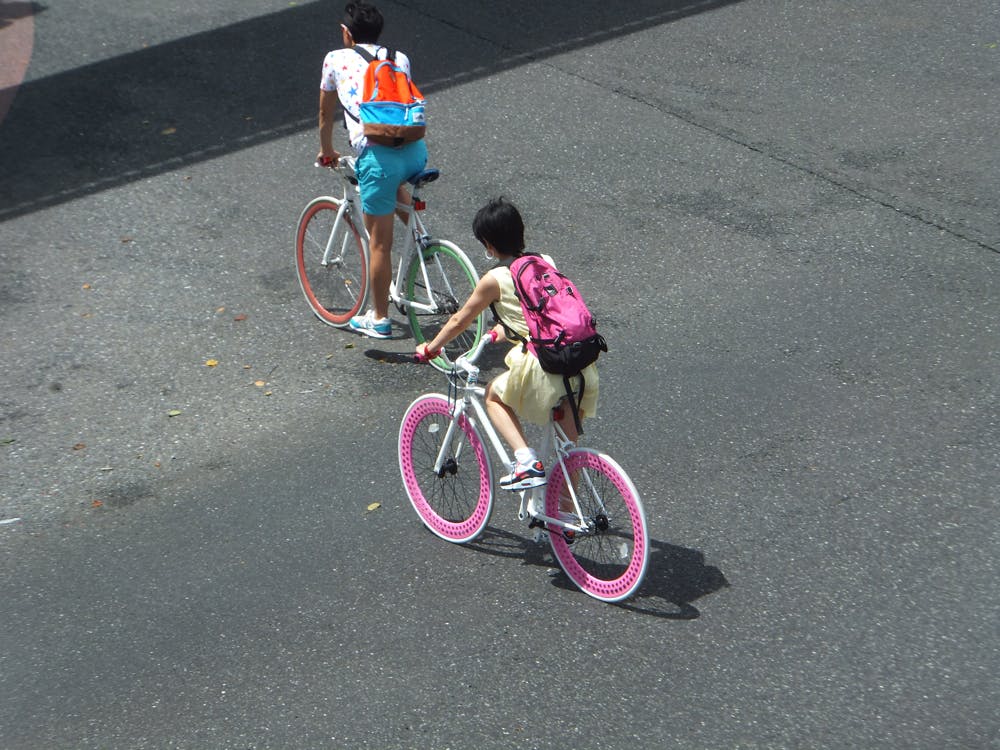The rarely inforced rules
Once you get on a bike in Tokyo, you will be surprised over how well your fellow commuters understand your needs and how aware they are of bicycles in the townscape. However, there are some rules you need to play by (although they are rarely actually enforced by the police).
Roads vs. sidewalks
Bicycles, as do all other road vehicles, travel on the left-hand side of the road. In most cases bicycles are not allowed on the sidewalks, unless otherwise is stated. Exceptions to the rule includes children under the age of 13 and unavoidable circumstances such as roadway or traffic conditions.

Regardless of the rule, many cyclists choose to take use of the sidewalks. The police will overlook the rule, but the law can be really dysfunctional. If you find yourself on a shared sidewalk, always keep good distance and never harass or hit pedestrians - that might end up costing you. The highest claim from a collision between bike and pedestrian ended up at several million yens.
Equipment and insurance
According to the law you must equip your bike with a light in the front, a reflector in the rear and a bell. In order to make it easier to find stolen bicycles, all bikes need to be registered with the prefectural police department. However, only residents of Japan can register.
One-way streets
Almost all of Japanese oneway roads allow cyclists to legally ride along them both ways. But be careful. Drivers tend to be careless when cyclists approach them the wrong way or when they open their car doors.
Carry your bike
In Japan, you are not allowed to bring your bike on public transport without doing “Rinko». This means your bike must be put in a bike bag before bringing it onto a coach or a train. A bike bag costs around 5,000-8,000 yen, and you find them in most bike shops in Japan.

Signs
- Be sure to stop short of a stop sign and look to your right and left. If there is no traffic, you can proceed.
- Bicycle riders must obey the traffic lights. Special traffic lights for pedestrians and bicycles should be complied with.
- «Do not enter by bicycle”. In most cases you will see this sign at underpasses, overpasses or freeways.
- Riding side-by-side on bicycles is prohibited, except for areas with road signs that indicate “Riding side by side is permitted.” On exception is when riding a bicycle with a child under six years old, in this case riding double is prohibited.
- You don’t drive drunk, and you don’t cycle drunk either. If you get caught you may face up to five years in prison or a fine up to one million yen.
- Wearing a helmet is optional, although children under the age of 13 are encouraged to always wear one while cycling.
- And finally - do not use your mobile phone or an umbrella while riding a bicycle.